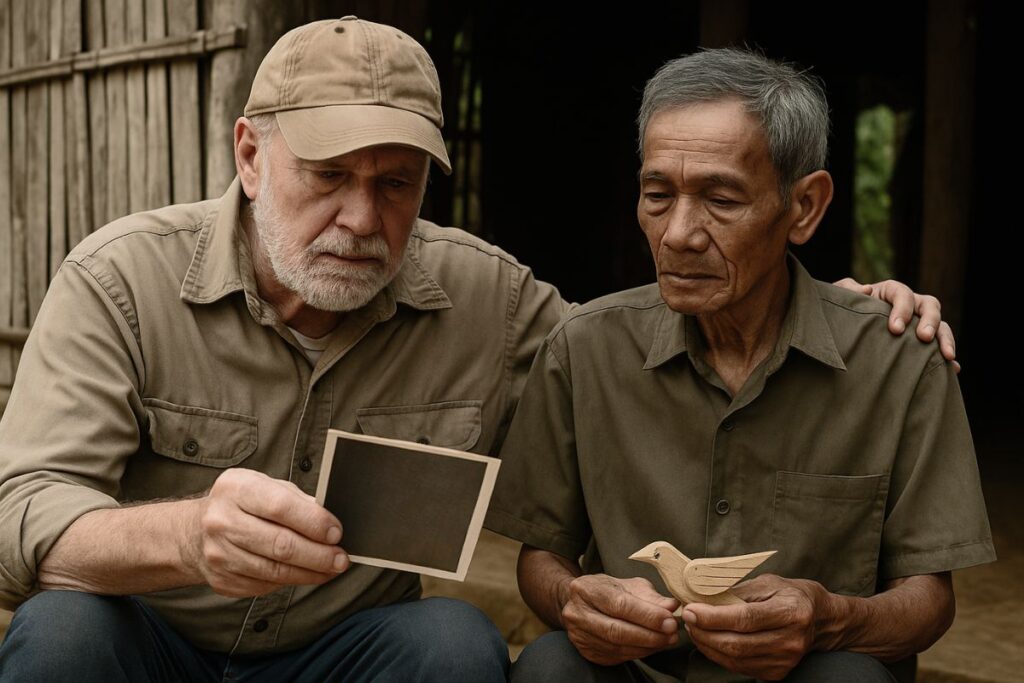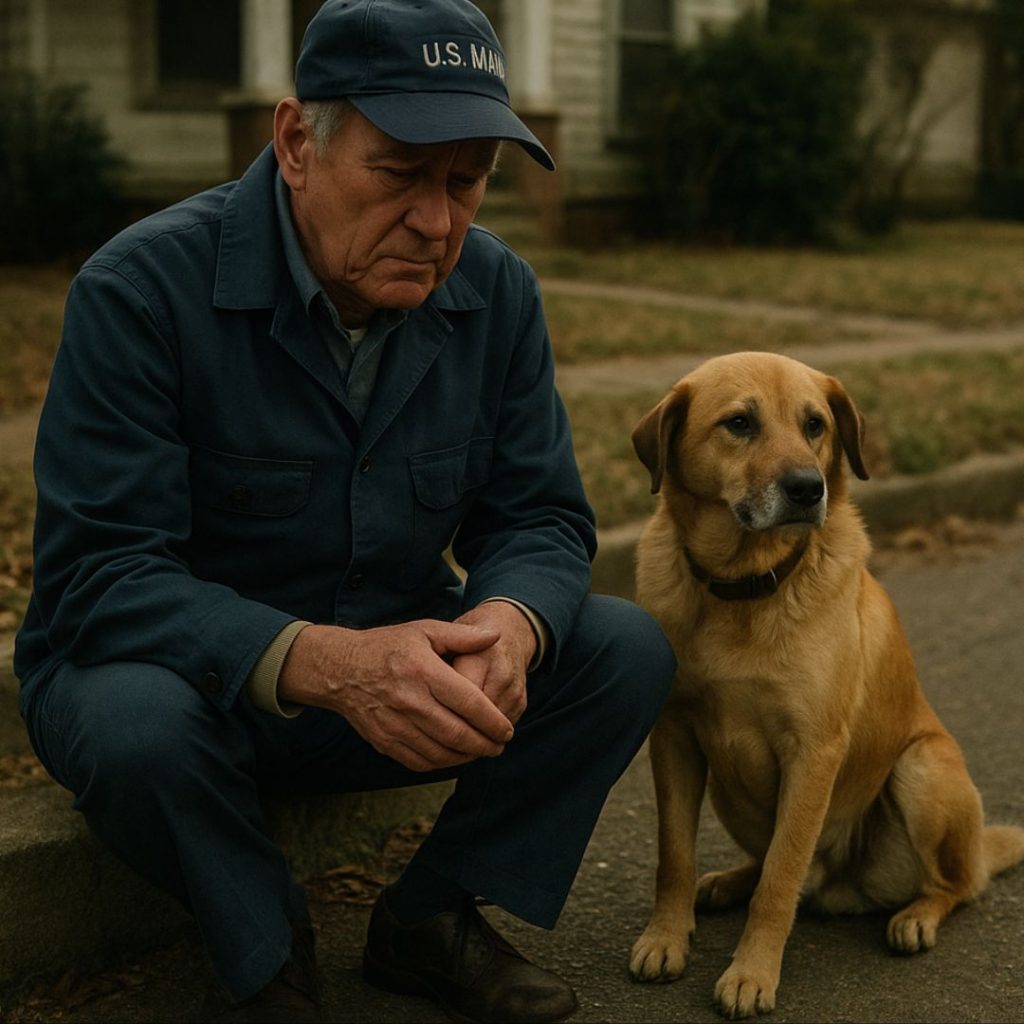Part 4
Clark Air Base, Philippines — June 1972
Jack Turner sat in the sterile quiet of a military hospital ward, staring at the ceiling fan as it lazily turned overhead. His leg was wrapped tight and elevated. A bandage ran across his forehead. But it wasn’t the wounds that kept him awake.
It was the silence.
No helicopters. No dripping jungle. No fevered breathing beside him.
Just white sheets and questions.
The debriefing had lasted six hours.
They asked everything — coordinates, dates, altitude, the moment of the missile strike.
Then they asked about the boy.
Jack had refused to give a full name. “He didn’t give one,” he lied. “Just Minh. That’s all I knew.”
The officer had frowned. “You’re saying a North Vietnamese civilian — and you’re sure he wasn’t VC — fed you, healed you, carried you to Laos?”
“Yes.”
“Why would he do that?”
Jack looked out the window. The answer lived somewhere between a baby photo and a blood-stained riverbank. But he just said, “He didn’t see a soldier. He saw a man.”
They didn’t like that. But they wrote it down.
Minh had been taken elsewhere — some civilian hospital in Laos, then a refugee camp.
Jack tried to follow up through back channels. Nobody would say much.
“Non-U.S. national,” someone muttered. “Not our jurisdiction.”
Jack offered to pay for Minh’s treatment. The paperwork vanished into a desk drawer.
By the time Jack returned to the States, he still hadn’t seen Minh again.
He stepped off the plane in San Diego with a limp and a duffel bag full of guilt.
His wife met him at the gate, holding Lena in her arms — now four months old, eyes wide, hair soft as corn silk.
He hugged them both. Tighter than he meant to.
She wept. He didn’t.
Jack couldn’t cry yet.
Not until he knew what became of the boy who gave him back this moment.
Years passed.
Jack finished his service in ‘76. Never flew again. Took a job teaching history in a quiet town outside Richmond. Told his students about ancient wars, not his own.
He wrote letters. Dozens. To embassies, NGOs, relief organizations.
“Looking for a Vietnamese youth named Minh,” he wrote. “Helped an American pilot escape in May 1972.”
He never got a response.
Sometimes he dreamed of the bamboo hut. The smell of rain. The way Minh sat, quiet, carving wood to keep his hands busy.
Sometimes he woke up saying the boy’s name out loud.
In 1982, Jack took Lena fishing. She was ten, bright, curious. Too curious.
“Did you ever kill anybody, Dad?”
Jack flinched. Not at the question — but at how calmly she asked it.
He looked out at the lake. “Yes,” he said softly.
“Oh.” A pause. “Did anyone save you?”
He smiled. For the first time in a long time, it didn’t hurt to remember.
“Yes, sweetheart,” he said. “Once, someone did.”
In 1987, Jack received a form letter from the Red Cross. No news. No record.
Minh had vanished.
And maybe that was mercy.
Maybe he got to start over.
But Jack didn’t forget.
Every birthday, every year his daughter grew taller and stronger, every time he saw a plane in the sky — he remembered the boy who should’ve been a man by now.
He kept the old photo — the one Minh had shown him — tucked in the back of his wallet.
Sometimes he’d take it out, press his thumb to the worn edge, and whisper, “I still owe you, kid.”
In 2002, thirty years after Kon Tum, Jack saw a headline in the Washington Post:
“Vietnam Opens Central Highlands to Foreign Tourists”
He folded the paper slowly. His hand trembled.
That night, he booked a ticket.


